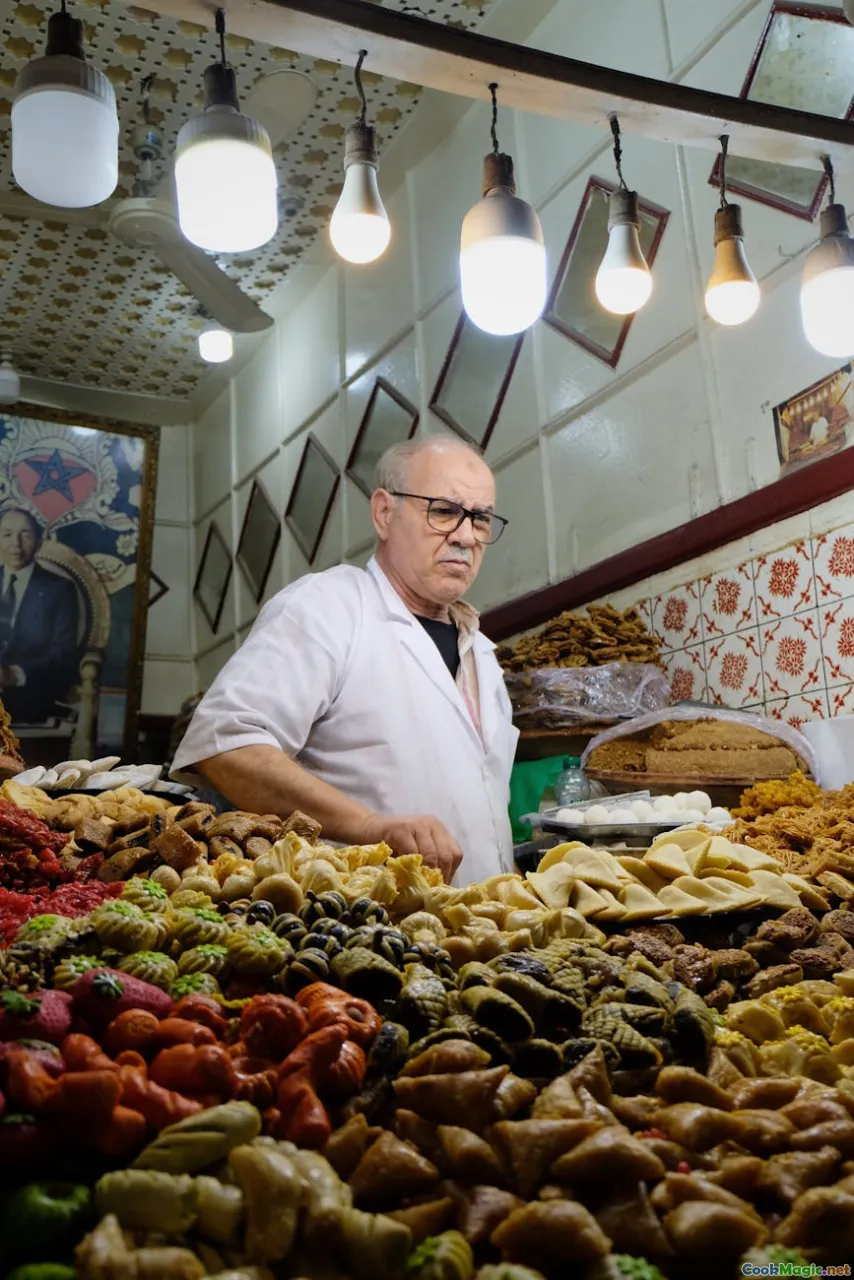Middle Eastern Desserts to Savor
8 min read Discover the rich tapestry of Middle Eastern desserts, from aromatic baklava to silky halva, and indulge in their cultural and sensory delights. April 30, 2025 01:00
Middle Eastern Desserts to Savor
Imagine walking through a bustling souk in Marrakech, Cairo, or Beirut, where the air is thick with the aroma of fragrant spices, roasted nuts, and honey. Amidst the vibrant chaos, a symphony of sweets beckons—each dessert telling a story of history, culture, and artistry. Middle Eastern desserts are more than just treats; they are a celebration of centuries-old traditions, a reflection of the region’s rich cultural tapestry, and an invitation to indulge in flavors that dance across the palate.
The Cultural and Historical Tapestry of Middle Eastern Sweets
Middle Eastern desserts are rooted in centuries of culinary evolution, shaped by trade routes, religious practices, and regional ingredients. The Silk Road, for instance, introduced sugar and spices that transformed local sweets into exotic treasures. Islamic culinary traditions emphasize hospitality and generosity, often expressed through elaborate desserts served during festivals, weddings, and religious occasions.
These sweets are woven into the social fabric—shared among families, offered to guests, and gifted during celebrations. Their preparation often involves meticulous craftsmanship, reflecting a deep respect for tradition and artistry.
Sensory Journey: Tasting the Middle Eastern Sweets
What makes Middle Eastern desserts truly enchanting is their sensory richness. The textures range from the flaky crunch of pastry to the silky smoothness of syrup-soaked confections. Aromas are a complex blend of honey, rosewater, orange blossom, and spices like cinnamon and cardamom. Visually, they are often adorned with edible gold, pistachios, or sesame seeds, creating a feast for the eyes as well as the palate.
Signature Middle Eastern Desserts
1. Baklava: The Quintessential Nutty Pastry
Perhaps the most iconic of Middle Eastern desserts, baklava is a layered pastry that combines crisp phyllo dough with a filling of finely chopped nuts—traditionally pistachios or walnuts—and a generous drizzle of honey or rosewater syrup. The preparation is an art form: layers of delicate, buttery phyllo are meticulously brushed with butter, then assembled with the nut filling, baked to golden perfection, and soaked in fragrant syrup.
The result is a symphony of textures—crisp and flaky exterior with a moist, chewy interior—and a complex sweetness that balances honey’s richness with the nutty depth. Its aroma alone, infused with rosewater and spices, transports you to a bustling bazaar.
2. Halva: The Velvet Sweet
Halva offers a different sensory experience—silky, dense, and sweet. Made from tahini (sesame paste) or semolina, halva is often flavored with vanilla, saffron, or pistachios. The sesame version has an earthy, nutty flavor with a melt-in-the-mouth texture, while semolina halva is more crumbly and fragrant.
In many regions, halva is served during religious festivals or family gatherings. Its preparation involves simmering the base with sugar syrup until it thickens into a smooth, fudge-like consistency. The addition of nuts or dried fruits elevates its richness.
3. Knafeh: The Cheesy Delight
Knafeh is a decadent dessert featuring a layer of shredded phyllo or semolina dough, soaked in syrup and topped with a generous layer of cheese or clotted cream. When baked, the cheese melts into the crispy top, creating an irresistible contrast of textures.
Traditionally served warm, knafeh boasts a fragrant, sweet aroma with hints of orange blossom or rosewater. Its visual appeal lies in the golden, stringy cheese beneath the crisp surface—truly a comfort food with a luxurious twist.
4. Ma’amoul: The Date-Filled Cookies
Ma’amoul are delicate, intricately patterned cookies filled with dates, nuts, or figs. Made from semolina or wheat flour, these confections are often molded with traditional wooden stamps, resulting in beautiful geometric patterns.
They are usually flavored with orange blossom or rosewater, and their crumbly texture pairs beautifully with a cup of Arabic coffee. Ma’amoul are customary during Eid and Ramadan, symbolizing hospitality and celebration.
5. Atayef: The Ramadan Favorite
Atayef are small, pancake-like pastries filled with sweet cheese or nuts, folded into a half-moon shape, then fried or baked. Once cooked, they are soaked in syrup, making them irresistibly moist and sweet.
Often enjoyed during Ramadan, atayef are a festive treat, their soft, chewy texture contrasting with the crunch of nuts and the syrup’s sticky sweetness. They embody the warmth and communal spirit of the holy month.
Regional Variations and Unique Twists
While these desserts are beloved across the Middle East, each country and region adds its unique touch. For example:
- Lebanese baklava often features a mix of pistachios and a honey-syrup infused with cinnamon.
- Turkish delight (lokum), though technically a confection, shares the region’s love for fragrant, chewy sweets flavored with rosewater and citrus.
- Persian saffron ice cream (bastani), though not a traditional dessert, complements the sweet richness of other confections.
Personal Reflections and Culinary Insights
Having traveled extensively through the Middle East, I have been fortunate to taste these desserts in their authentic settings—freshly made in family kitchens, served during festivals, or enjoyed in cozy cafes. Each bite carries a story of generations, of shared memories, and of regional pride.
My favorite experience remains sitting on a rooftop in Cairo, sipping mint tea and nibbling on warm, honey-drenched baklava as the sun sets over the Nile. The flavors, aromas, and textures create a multisensory memory that lingers long after the last piece is gone.
Final Thoughts: An Invitation to Savor
Middle Eastern desserts are more than just sugar and spice—they are a living testament to a region’s history, culture, and artistry. They invite us to slow down, savor each bite, and appreciate the craftsmanship behind every layer.
Whether you are a seasoned foodie or a curious newcomer, exploring these sweets offers a delicious journey through time and tradition. So next time you encounter a platter of baklava, halva, or ma’amoul, take a moment to indulge and immerse yourself in the rich, sweet world of Middle Eastern desserts—an experience that promises to delight all your senses.









